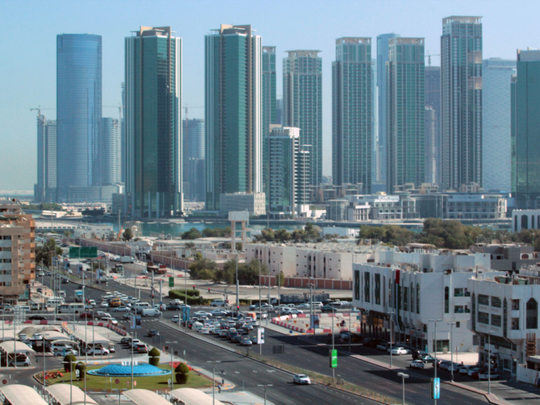
Dubai: Abu Dhabi’s property market is moving at two speeds. Within the freehold/investment zones space, just a little more than 900 residential units were released into the market in the first six months of 2017. And the bulk of these come from the three mid-rise buildings forming The Bridges project from Aldar on Reem Island. (Each of these buildings offered more than 200 units apiece.) In comparison, the Abu Dhabi market had seen freehold releases of 3,845 units in 2015 and 4,498 units last year.
For context, Dubai’s freehold market saw an estimated 13,000 plus releases in the first six months of 2017, which also includes subsequent releases of units at projects that were launched earlier.
That’s as far as freehold is concerned. Abu Dhabi’s overall property development market hasn’t shared the lethargy in the freehold space.
In fact, according to new data from Reidin-GCP, there was a significant increase in the number of new building permits — including at the freehold designated zones — issued during 2016, figures for which are available. That meant 1,972 new permits were issued last year as against the 1,322 recorded during 2015.
“Clearly, the new housing activity is defying the overall economic situation,” said Sameer Lakhani, Managing Director at the consultancy Global Capital Partners. “This is also happening in Dubai — at a specific level, building permits are an indicator of future growth and underlying optimism in both cities.”
The Reidin-GCP report suggests that the spike in new permits throws some light on what could be in store. “Three years since the crash in oil prices, it seems as if markets have started to accept the new normal. New building permits… [are] an indicator used to predict the direction of the economy over the next 12-18 months, indicating that there appears to be a gradual move higher in growth rates in the coming years,” it states.
But will the granting of permits translate into immediate construction activity on the ground? In Dubai, developers are rushing to forge ahead with their project schedules, with many seeing this as absolutely vital in helping them with their sales objectives. According to one developer, the sentiment is that if a project is anywhere above the 30-40 per cent mark construction-wise, there will be a perk up in investor interest. “It’s much better than showing an empty plot devoid of any construction,” the developer added.
But it remains to be seen what strategy Abu Dhabi developers will follow. Aldar Properties recently confirmed it is staying on track with its planned investments in new projects, with affordable housing being a key part of that.
Others are also framing their plans, and the upcoming Cityscape Global event in Dubai — scheduled for September — should see signs of that.
But developers with office or other mixed-use projects are likely wait… unless they are that certain of what they are offering. Leasing activity in Abu Dhabi’s office space is marginal at best.
But the Reidin-GCP report reckons there is room for improvement.
“A look into company formations reveals that in 2016 registered businesses within the emirate witnessed a 10 per cent increase,” it says. “This reaffirms the emirates initiative to diversify its economy into various sectors such as tourism and trade.”
The numbers do give weight to this — in 2016, 8,963 new business licenses were issued in Abu Dhabi compared with 9,228 in 2015. As against that, 2,114 businesses did not renew licenses against the 7,313 that did not do so in 2015.
During this period, GDP growth was trimmed from 2015’s 4.9 per cent to a more sober 2.8 per cent in 2016.
But businesses started taking action from 2015 onwards. “This led to an abnormal cancellation of licenses consequently slowing down the job creation machine,” the report notes. “In turn, population growth rate of the city has moderated due to the company and job consolidation efforts that have been underway.”
Abu Dhabi property prices still have lots to recover
Apartment values are still 36 per cent short from their 2009 peaks. Apart from the ongoing softness in the market, new supply in the last four years have also ensured price gains were moderate. Yet, those “investors that have held on have realised a return of 31 per cent in 7.5 years, with rental returns accounting for all the positive performance,” says the GCP-Reidin report. “Given that there has been considerable emphasis on rental rates reducing, especially in the apartment space, there has been concern on the level of asset prices.”











